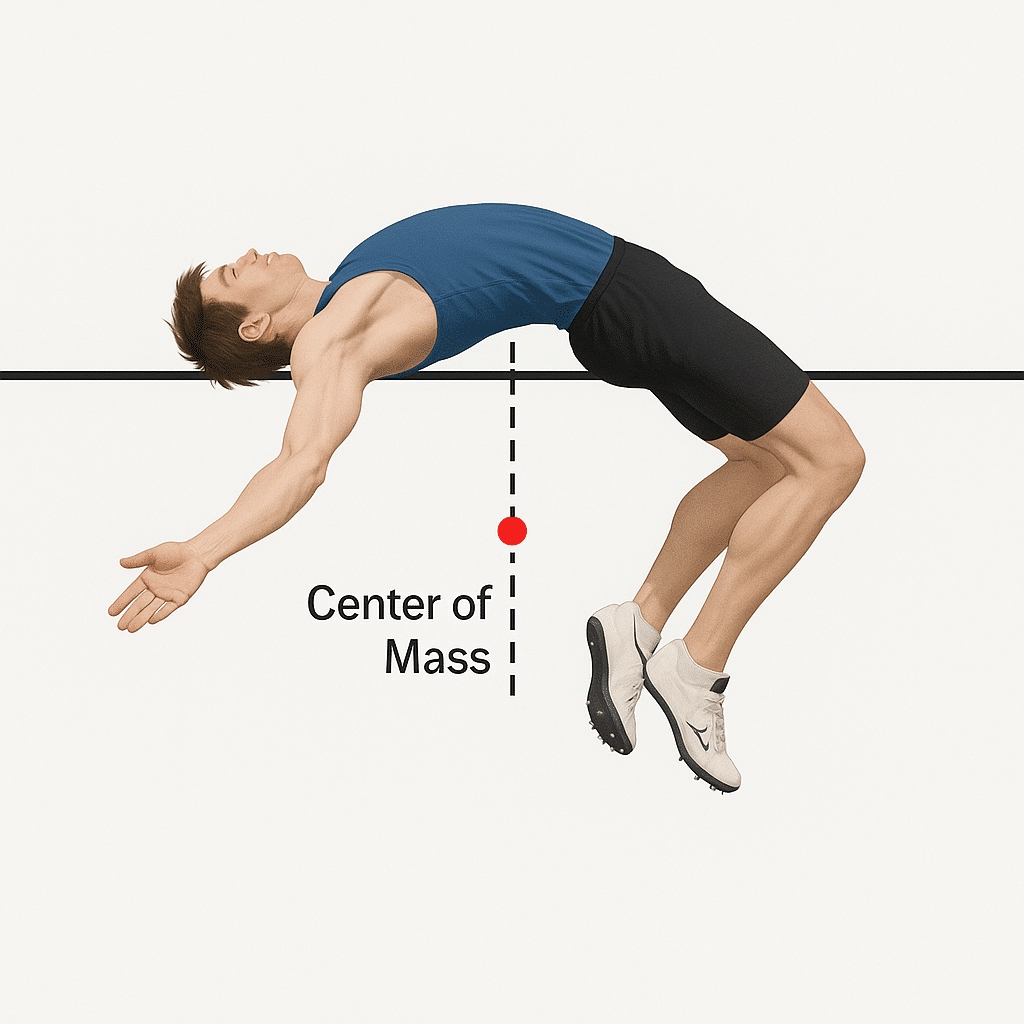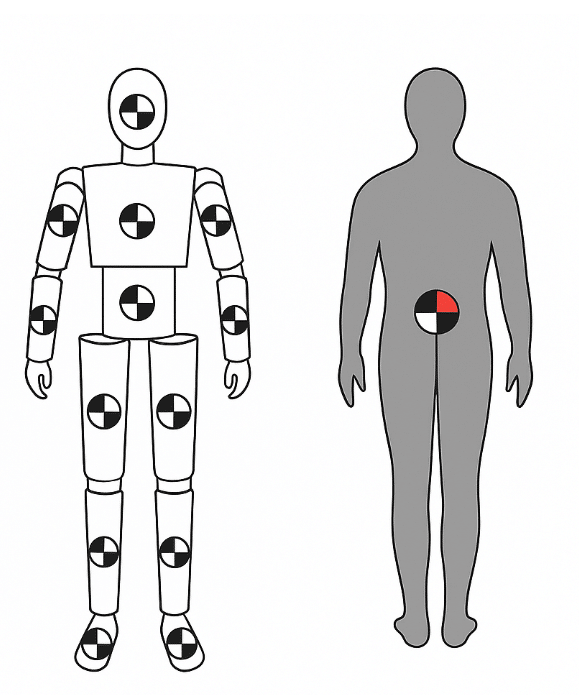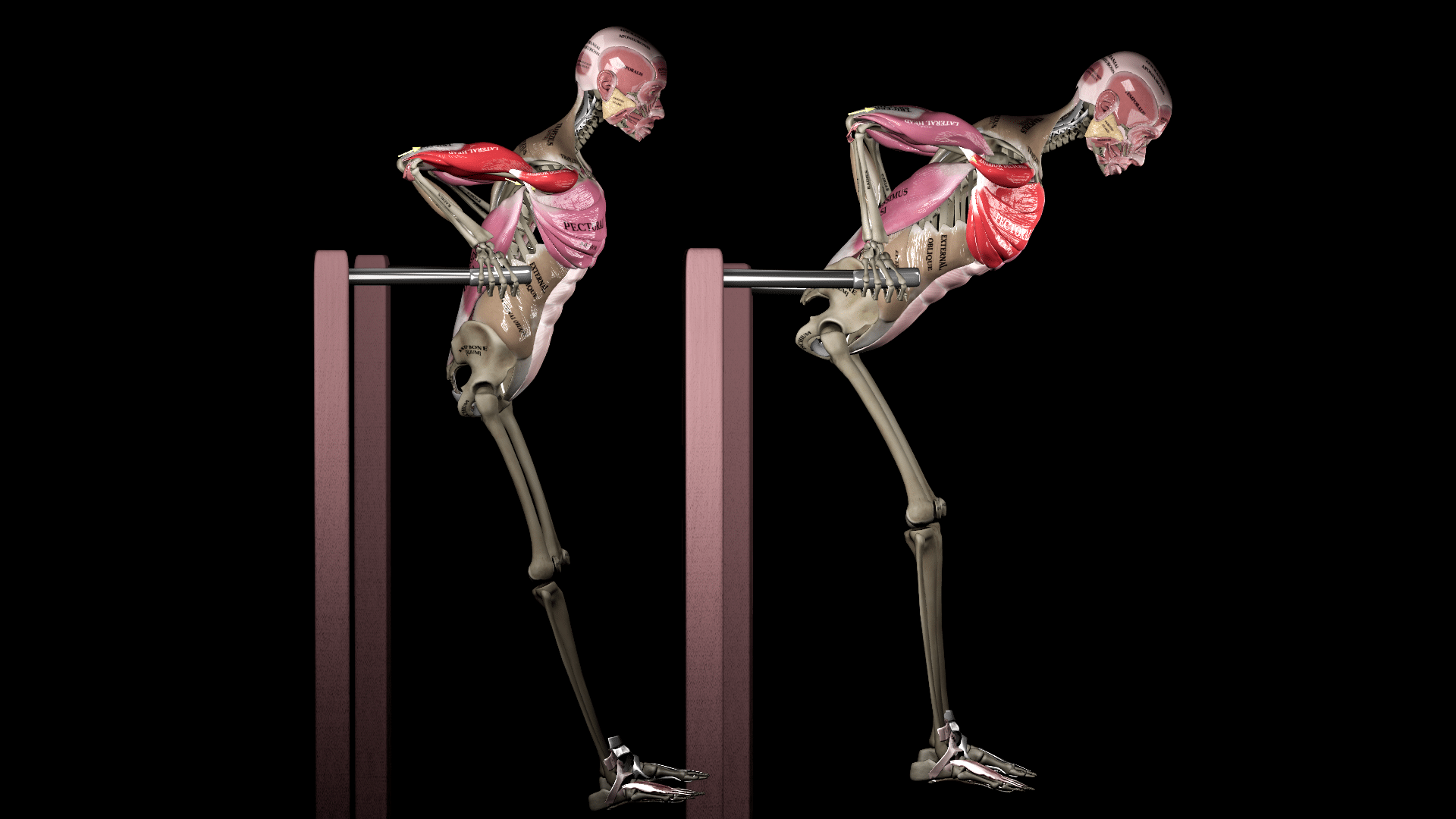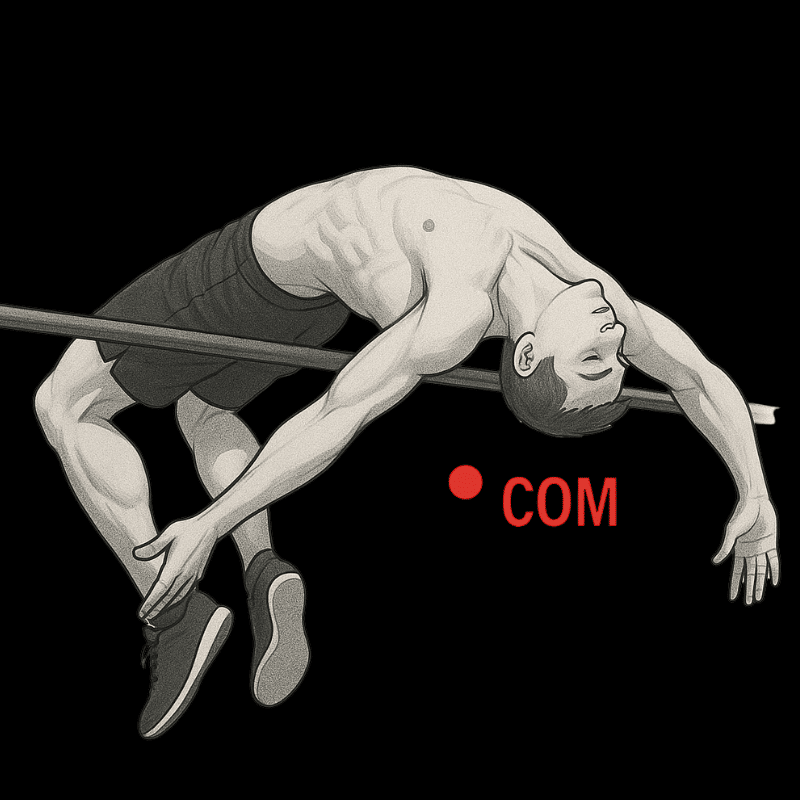Regarding training, many people believe that progress is all about doing more: more reps, more weight, more effort. Biomechanics is often seen as an abstract theory, belonging in classrooms rather than gyms. But what if understanding the science of movement is exactly what separates good athletes from great ones?
Take jumping events like the high jump and the pole vault. Most assume that to clear a high bar, an athlete must lift both their body and their center of mass above it. But biomechanics tells a different story that has reshaped the very foundation of these sports.
In 1968, high jumper Dick Fosbury introduced the Fosbury Flop, a technique that allowed him to keep his center of mass below the bar while his body cleared it by arching his back midair. This counterintuitive strategy transformed the high jump and is now used by virtually every elite jumper.
Around the same time, pole vaulter John Pennel developed a powerful swing technique to clear record-breaking heights. His success was not just about physical strength but about positioning his body so that his center of mass stayed lower than the bar, maximizing efficiency and height. These breakthroughs were not just displays of athleticism but demonstrations of how a deep understanding of biomechanics can transform movement.

At the heart of it all lies one fundamental concept: the center of mass. In this Muscle and Motion blog, we’ll explore what the center of mass is, how it shifts with every movement you make, and how learning to control it can improve your performance, increase movement efficiency, and give you a clear edge, whether you’re lifting, jumping, swinging, or simply trying to move better.
What is the center of mass?
The center of mass (COM) is where the body’s mass is considered evenly distributed in all directions. In a person standing upright with arms at their sides, the center of mass is typically located near the pelvis. However, this point is not fixed and is not necessarily located on a physical part of the body. Depending on the body’s shape and position, the center of mass can shift outside the body entirely, such as during a high jump, a gymnastics maneuver, or when limbs are extended in different directions. Any movement, such as lifting a leg or leaning the torso, changes how the body’s mass is distributed and thus causes the center of mass to shift within space.

The location of your center of mass is constantly shifting during dynamic movements such as jumping, squatting, or changing direction. The ability to control and guide this shifting point is a powerful asset in performance and movement efficiency. Whether you’re trying to jump higher, stay balanced, or lift more effectively, understanding how your center of mass behaves gives you a clear advantage.
How do athletes use the center of mass to their advantage?
Now that we’ve covered the center of mass and why it matters, let’s look at how athletes apply this concept in real-world movement. Whether the goal is to conserve energy, generate momentum, improve stability, or perform smoother transitions, successful movement often hinges on the ability to manipulate the center of mass with precision.
Athletes and coaches use this principle across various activities, from weightlifting and jumping to gymnastics and change-of-direction drills. While the context may differ, the underlying strategy remains the same: controlling the center of mass to move more efficiently.
Let’s look at three key ways this concept is used to optimize athletic performance:
Minimizing COM movement to conserve energy
In some strength-based movements, efficiency isn’t about how much you move but how little. By minimizing unnecessary changes in the center of mass, especially in the vertical plane, athletes can reduce the total work required to complete a movement. For example, in dips, lowering the body in a straight vertical line causes the center of mass to drop significantly, increasing the effort needed to push back up. The center of mass stays relatively higher throughout the range of motion by slightly leaning the torso forward during the descent. This position reduces vertical displacement, shortens the movement path, and leads to a more energy-efficient repetition, helping athletes sustain performance over more sets or reps with less fatigue.

The same principle applies in burpees over the bar, where staying slightly bent at the hips and knees during the jump keeps the center of mass lower and minimizes vertical displacement. Instead of standing up fully between reps, athletes remain low, saving time and energy.
Manipulating the COM to initiate or assist movement
Think of a child on a swing: by bending and straightening the legs at the right moments, they can swing higher and higher without any external push. This motion works by shifting the center of mass to add energy and momentum to the system. The same principle is used deliberately in many athletic movements to reduce muscular effort and improve efficiency.
In certain explosive or gymnastic movements, athletes deliberately shift their center of mass to make transitions more efficient. Raising the center of mass at the right moment, often through hip extension or knee tuck, reduces the muscular effort needed to complete the movement. For instance, in the kipping muscle-up or handstand kick-up, this upward motion helps the body move into position more smoothly, using momentum to assist rather than relying solely on strength.
Take the kipping muscle-up as an example. The athlete generates a powerful swing, drives the hips, and tucks the knees to elevate the center of mass. This motion raises the body high enough that the center of mass is already close to the final position above the bar. At that point, most of the work has already been done through timing and momentum, and all that remains is a quick and efficient transition into the dip. This technique minimizes fatigue, improves flow, and allows for smoother, more repeatable reps.
Keeping the COM low for stability and control
Maintaining a low center of mass enhances balance, stability, and movement efficiency in many ground-based and agility-focused movements. For example, in side shuffle drills, athletes are trained to stay low, bending at the hips and knees to maintain control and reduce unnecessary vertical movement. This lowered position allows for faster reactions, smoother directional changes, and better energy conservation, making it especially valuable in sports that demand quick lateral motion and dynamic footwork.
In summary, understanding how the center of mass behaves and how to control it can transform how we move, train, and perform. Whether the goal is to conserve energy, improve balance, generate momentum, or move more efficiently, COM manipulation is a fundamental tool in the athlete’s toolbox. It bridges the gap between theory and practice, helping athletes move better and train smarter. So next time you’re coaching a jump, a lift, or a change of direction, remember: it’s not just about force, it’s about where your mass is, and when.
At Muscle and Motion, we believe that knowledge is power, and understanding the ‘why’ behind any exercise is essential for your long-term success.
Let the Strength Training App help you achieve your goals! Sign up for free.


